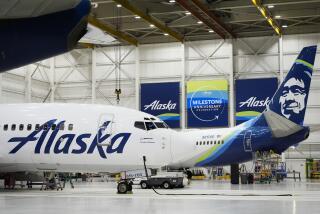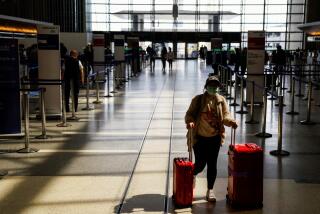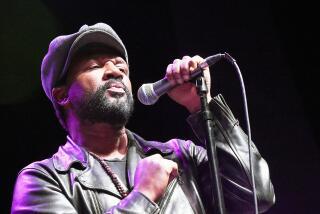Breach of Airline Security Is Nothing to Panic About
The arrest of Nathaniel T. Heatwole on charges of smuggling box cutters, bleach and matches aboard two commercial airliners reminds us that, despite significant improvements since Sept. 11, our security systems are not perfect. They never will be.
These items, of course, should have been detected by the security screeners and, barring that, they never should have remained undetected for five weeks on airliners that should be checked before each flight.
But let’s not panic yet. Just because someone put box cutters on two planes doesn’t mean that a hijacking could have succeeded.
That’s because we’ve established what is known as a layered defense. Had a real terrorist smuggled a box cutter and the other supplies on board, he would still have had to contend with a locked cockpit door, the possibility that a federal sky marshal was on the flight and, of course, the fact that today’s post-9/11 passengers are not likely to behave as passive victims.
At the same time, however, we have to be realistic about security.
Many years ago, a member of Congress asked me: “If we gave you all of the resources you wanted and all of the authority you needed, could you guarantee that no airliners would ever be hijacked?”
I answered: “Yes, it’s easy. Ground them.”
But if we want to fill thousands of airplanes with millions of passengers, baggage and freight, we are obliged to accept some level of risk.
Stringent security measures can reduce that risk but never eliminate it. There is no such thing as 100% security in any area, whether it’s in protecting planes, presidents or public buildings. Not that we shouldn’t try for 99.99%. Hundreds can die in a sabotaged or hijacked airliner, thousands if it is turned into a deadly missile -- which is why we devote so much effort to aviation security.
But we have to accept that security screening at airports is an enormously difficult task. Tens of thousands of flights take off daily from more than 400 airports nationally. They carry on average more than 2 million passengers every day, plus their stuff. Screeners are obliged to screen people, carry-on suitcases, briefcases, purses, backpacks, laptop computers, parcels, shoes, parkas, jackets, cellphones, pagers and all the other paraphernalia we insist on taking with us.
Probably more than 10 million items every day are X-rayed, sniffed, examined by hand. How many breaches might there be? One in 100,000? One in a million?
Budget cuts imposed by Congress have made the task more difficult. In the last year, the Transportation Security Administration has been forced to lay off more than 7,000 screeners -- a 13% cut. Some checkpoints are short-handed, increasing pressure on screeners and potentially degrading their performance.
We certainly should not be looking for ways to reduce the security budget. We need more screeners, not fewer. A stable federal security force, as opposed to the high turnover rates experienced when private companies performed the screening task, gives us the opportunity to improve training and performance.
We have not devoted enough attention to human engineering. We deploy technology and dictate rules; we treat the screeners as an extension of a machine, with little research on how people can best perform the tasks required. We may want to explore alternate configurations of security checkpoints to increase effectiveness and efficiency.
Although it would not have prevented a box cutter from being smuggled on board, we ought not to rely on a single technology for detecting explosives in checked baggage; systems involving multiple technologies are better.
Although Americans prefer security to be passive and democratic, we can, without trashing civil liberties, improve our prescreening information to better focus security efforts.
Yet none of these measures will guarantee an end to hijacking or sabotage. We still have to be realistic in our assessment and acceptance of risk.
More to Read
Sign up for The Wild
We’ll help you find the best places to hike, bike and run, as well as the perfect silent spots for meditation and yoga.
You may occasionally receive promotional content from the Los Angeles Times.






